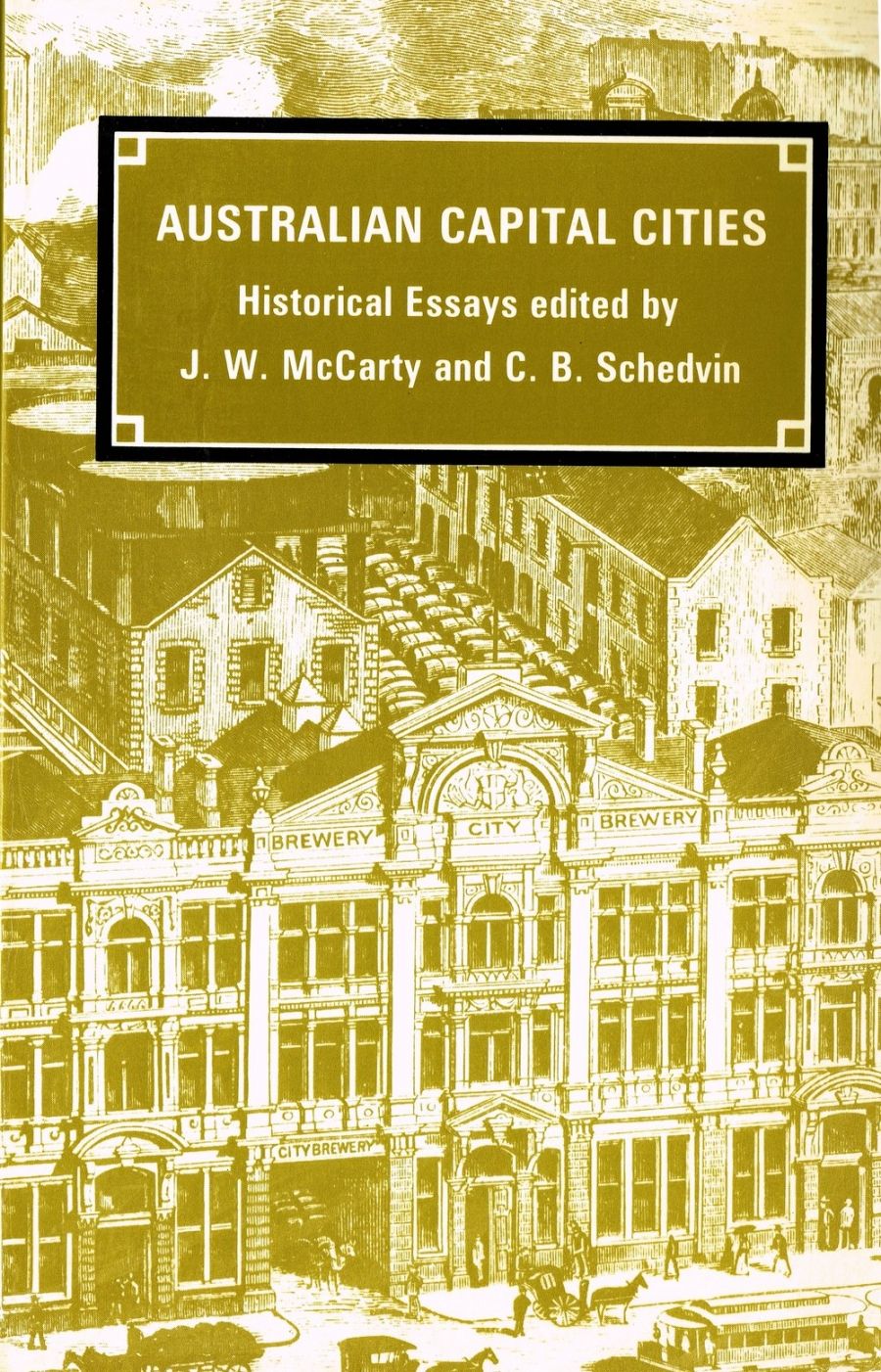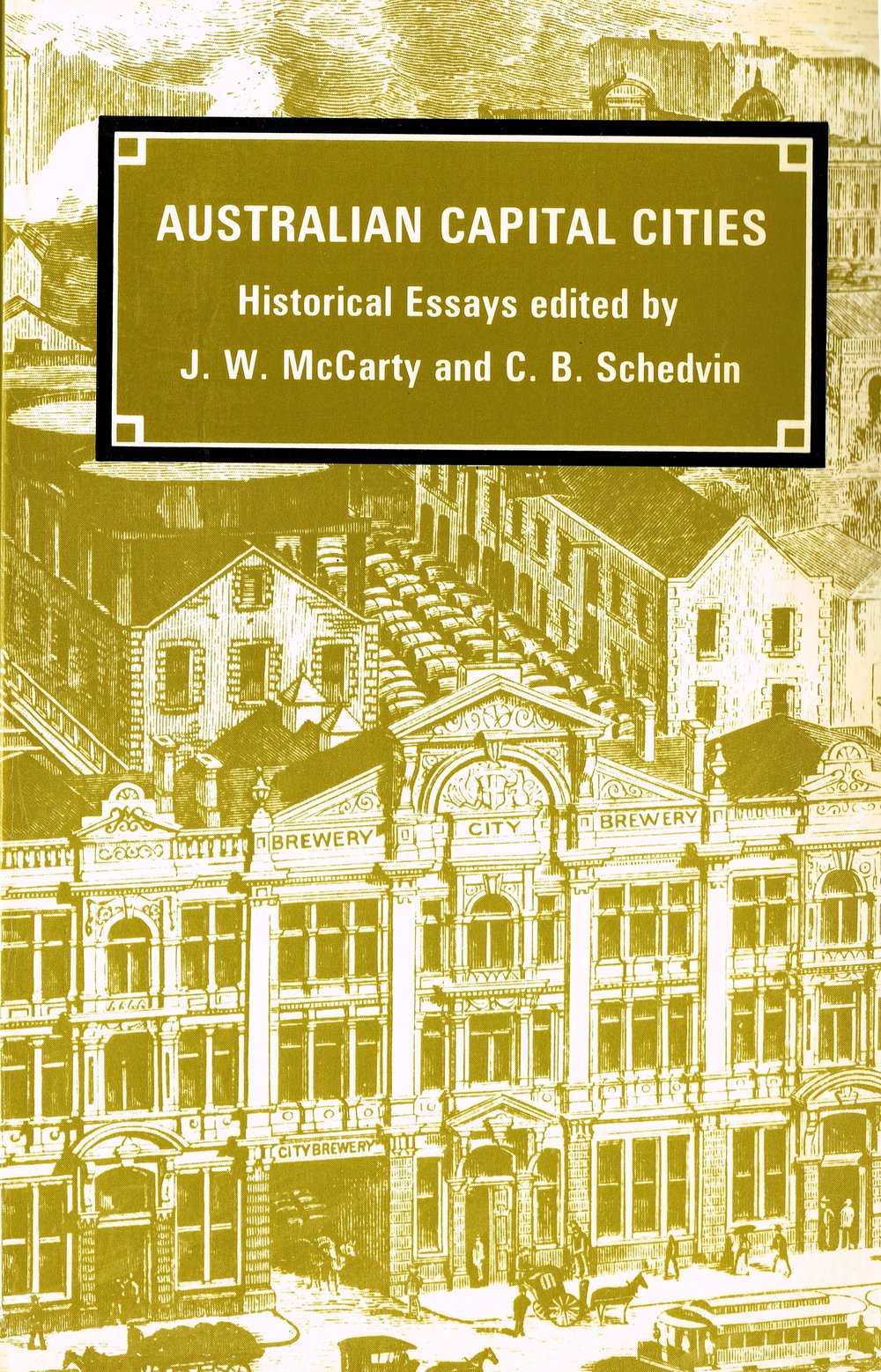
- Free Article: No
- Contents Category: Australian History
- Review Article: Yes
- Article Title: Towards urban history
- Online Only: No
- Custom Highlight Text:
Anyone interested in quickly assessing the scope, direction and lacunae of urban history in Australia would be well advised to read this attractively priced and presented anthology. Although only two of the ten contributions have been specially commissioned, the rest are recent pieces, mostly from out-of-print, expensive or turgid larger works. These are two general essays, an article on each of the capitals (with the exception of Perth), and three specialised pieces on aspects of city growth (sub-division of Paddington 1875-90, essential services and Melbourne in the 1880s, and East Perth 1884-1904).
- Book 1 Title: Australian Capital Cities
- Book 1 Subtitle: Historical Essays
- Book 1 Biblio: Sydney University Press, $6.00
- Book 1 Cover Small (400 x 600):

- Book 1 Cover (800 x 1200):

Most of the essays fall into the category of ‘urban biographies’, or attempts to establish the broad outlines of growth and to sketch the ‘personalities’ of the capital cities. The use of previously-published pieces tends to illustrate the editors’ warning about the pitfalls of local, suburban history – especially the danger of ‘eclecticism’ and of ‘failing to relate special studies to a central concept.’ At best there is a certain repetition of McCarty’s central points, as in Ian Turner’s serviceable sketch of Melbourne’s growth; or worst there is the snippet from Lawson’s compendium Brisbane in the 1890s, which neither complements the theme of metropolitan primacy nor seriously analyses Brisbane as an exception. It might have been advisable to have omitted one or more of the shorter pieces in favour of full reprints of McCarty and Merrett, and to have asked contributors to rewrite their articles in the light of McCarty’s suggestive framework. For instance, the promise of the early section of Williams’ discussion of the fashioning of Adelaide is not sustained. The analysis or the foundation years and pattern of development is sure, but rather more ambitious employment of census figures is necessary to allow the reader to trace subsequent suburban growth and functional differentiation. In surveying the twentieth century scene, the articles on Melbourne and Adelaide attempt too much, and only Davison possess the space and insight to relate convincingly the expansion of public facilities to the form and social pattern of the city.
Australian Capital Cities illustrates what the editors point to in their introduction: the absence of any ‘generally accepted synthesis or framework’ in the approach to Australian urban history. Yet with more direction the book might have achieved greater unity, in addressing common questions if not reaching similar conclusions. More serious however is the implication in the introduction and in the anthology as a whole that urban historians are primarily interested in capital city primacy, urban form, metropolitan-hinterland relationships and the like, to the neglect of industrial and social structures and class relations. There is little in this book to disabuse readers of that notion, which a reading of Bolger’s Hobart Town, Lawson’s Brisbane in the 1890s and Davison’s Marvellous Melbourne will show to be mistaken. With that reservation, Australian Capital Cities is a fair sample of the existing state of urban history.


Comments powered by CComment